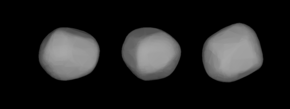
Lydia is a large belt asteroid with an M-type spectrum, and thus may be metallic in composition, consisting primarily of nickel-iron. It was discovered by French astronomer Alphonse Borrelly on 19 April 1870 and was named for Lydia, the Asia Minor country populated by Phrygians. The Lydia family of asteroids is named after it.

Liberatrix is a main-belt asteroid. It has a relatively reflective surface and an M-type spectrum. Liberatrix is a member of an asteroid family bearing its own name.
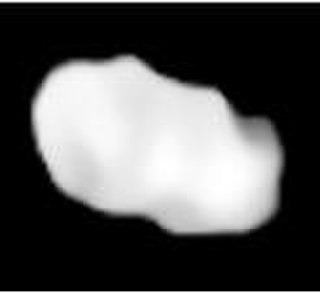
Elektra is a large outer main-belt asteroid and quadruple system with three minor-planet moons. It was discovered on 17 February 1873, by astronomer Christian Peters at Litchfield Observatory, New York, and named after Electra, an avenger in Greek mythology.

Atala is a large main belt asteroid that was discovered by brothers Paul Henry and Prosper Henry on 2 November 1875, but the discovery was credited to Paul. It is a type D asteroid, meaning that it is composed of carbon, organic rich silicates and possibly water ice.

165 Loreley is a main-belt asteroid that was discovered by C. H. F. Peters on August 9, 1876, in Clinton, New York and named after the Lorelei, a figure in German folklore.

196 Philomela is a large and bright main-belt asteroid. It is an S-type asteroid.

Bianca is a sizeable Main belt asteroid. It is an S-type asteroid. It was discovered by Johann Palisa on 4 September 1880, in Pola and was named after the Austro-Hungarian opera singer Bianca Bianchi. The Vienna newspapers contained several published accounts of the circumstances surrounding the honor extended to the diva in Spring 1882. In the late 1990s, a network of astronomers worldwide gathered lightcurve data that was ultimately used to derive the spin states and shape models of ten new asteroids, including (218) Bianca. The shape model for this asteroid is asymmetrical.
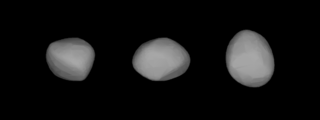
Unitas is a typical main belt asteroid that was discovered by Elia Millosevich on 1 March 1891 in Rome. The asteroid was named by the director of the Modena Observatory in honor of the Italian astronomer Angelo Secchi and the unification of Italy. It is classified as an S-type asteroid.

Goberta is a mid-sized Themistian asteroid that was discovered by French astronomer Auguste Charlois on 8 September 1891 in Nice.

Columbia is a stony asteroid from the middle region of the asteroid belt, approximately 26 kilometers in diameter. It was discovered on 22 March 1892, by French astronomer Auguste Charlois at Nice Observatory in southeast France. It is named after Christopher Columbus (1451–1506).

Devosa is a large Main belt asteroid. It was discovered by Auguste Charlois on 22 September 1892 in Nice. The asteroid is orbiting the Sun at a distance of 2.38 AU with a period of 3.68 years and an eccentricity (ovalness) of 0.14. These orbital elements are similar to that of the large asteroid 4 Vesta. The orbital plane of 337 Devosa is tilted at an angle of 7.85° to the plane of the ecliptic.
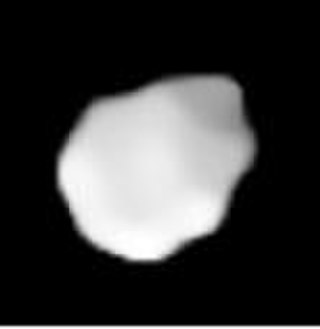
Eleonora is a large, stony main-belt asteroid that was discovered by the French astronomer Auguste Charlois on January 17, 1893, in Nice.
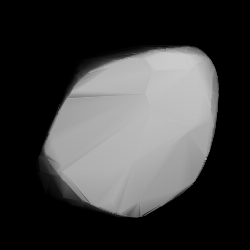
389 Industria is a large background asteroid, approximately 79 kilometers in diameter, located in the central region of the asteroid belt. It was discovered on 8 March 1894, by French astronomer Auguste Charlois at the Nice Observatory. The stony S-type asteroid has a rotation period of 8.5 hours. It was named after the Latin word for "diligence".

391 Ingeborg is an asteroid and second-largest Mars-crosser on an eccentric orbit from the asteroid belt. It was discovered by German astronomer Max Wolf on 1 November 1894, at the Heidelberg Observatory in southwest Germany. When discovered, it was observed for a couple of weeks, and follow-up observations were made in 1901 and 1904. The stony S-type asteroid has a rotation period of 26.4 hours and measures approximately 17 kilometers in diameter. Any reference of the asteroid's name to a person is unknown.

402 Chloë is a large main-belt asteroid. It was discovered by French astronomer Auguste Charlois on 21 March 1895 from Nice. This asteroid is orbiting the Sun at a distance of 2.56 AU with a period of 4.09 years and an eccentricity of 0.11. The orbital plane is inclined at an angle of 11.8° to the plane of the ecliptic.
Chloris is a very large main-belt asteroid that was discovered by Auguste Charlois on January 7, 1896, in Nice. It is classified as a C-type asteroid and is probably composed of primitive carbonaceous material. The spectrum of the asteroid displays evidence of aqueous alteration. It is the namesake of the Chloris family of asteroids.
Patientia is approximately the 15th-largest asteroid in the asteroid belt with a diameter of 225 km. It was discovered by French astronomer Auguste Charlois on 4 December 1899, and assigned a provisional designation 1899 EY.

776 Berbericia is a minor planet orbiting the Sun. A main-belt C-type asteroid, it was discovered on 24 January 1914 by astronomer Adam Massinger at Heidelberg Observatory in southwest Germany. It was named by Max Wolf in honor of Adolf Berberich (1861–1920), a German astronomer. The spectra of the asteroid displays evidence of aqueous alteration.

842 Kerstin is a dark background asteroid from the outer regions of the asteroid belt. It was discovered on 1 October 1916, by German astronomer Max Wolf at the Heidelberg-Königstuhl State Observatory in southwest Germany. The assumed C-type asteroid has a rotation period of 18.7 hours and measures approximately 41 kilometers in diameter. Any reference of the origin of the asteroid's name is unknown.
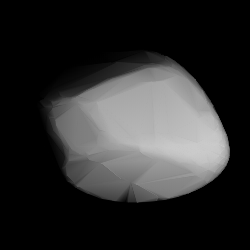
1187 Afra is a dark background asteroid from the central regions of the asteroid belt. It was discovered by German astronomer Karl Reinmuth at Heidelberg Observatory on 6 December 1929. The X-type asteroid has a rotation period of 14.1 hours and measures approximately 32 kilometers in diameter. The origin of the asteroid's name remains unknown.
